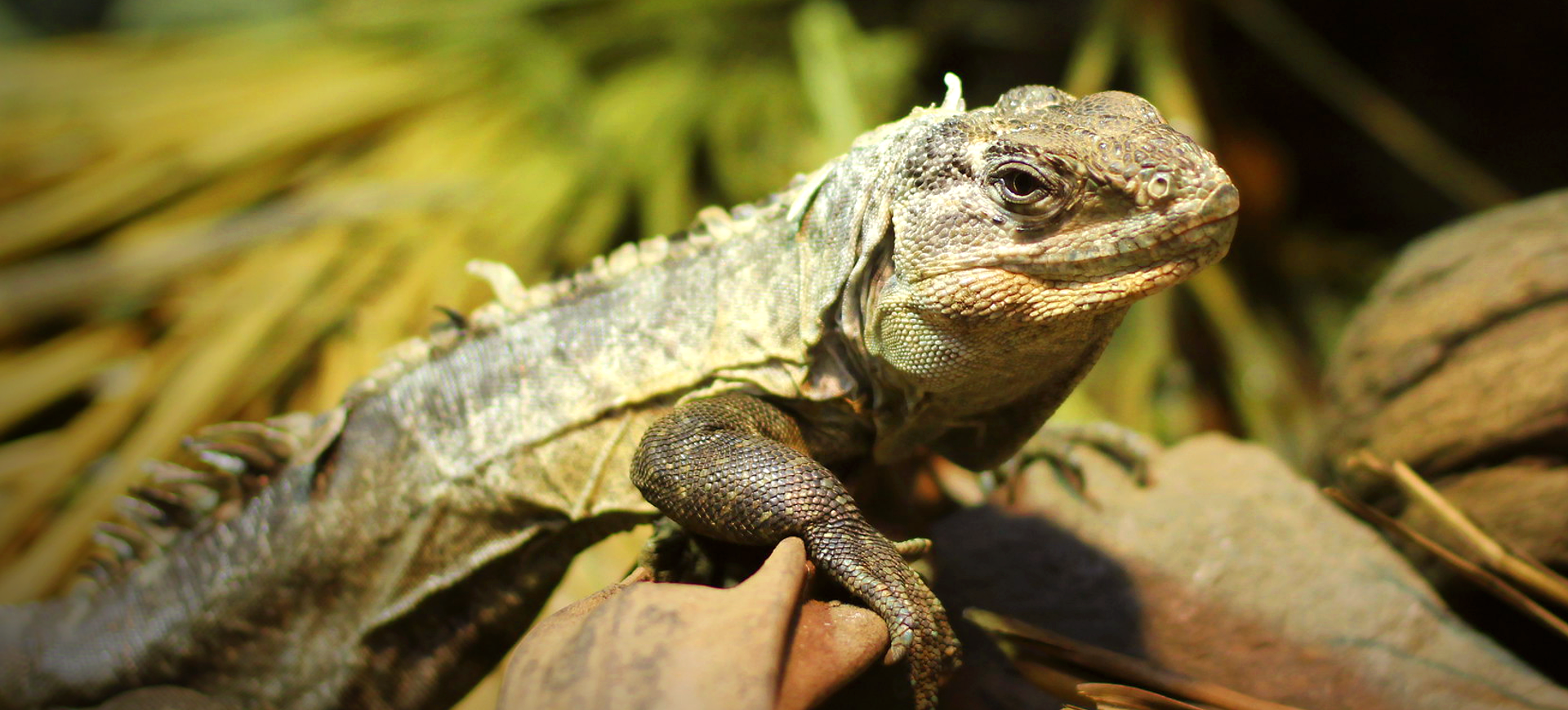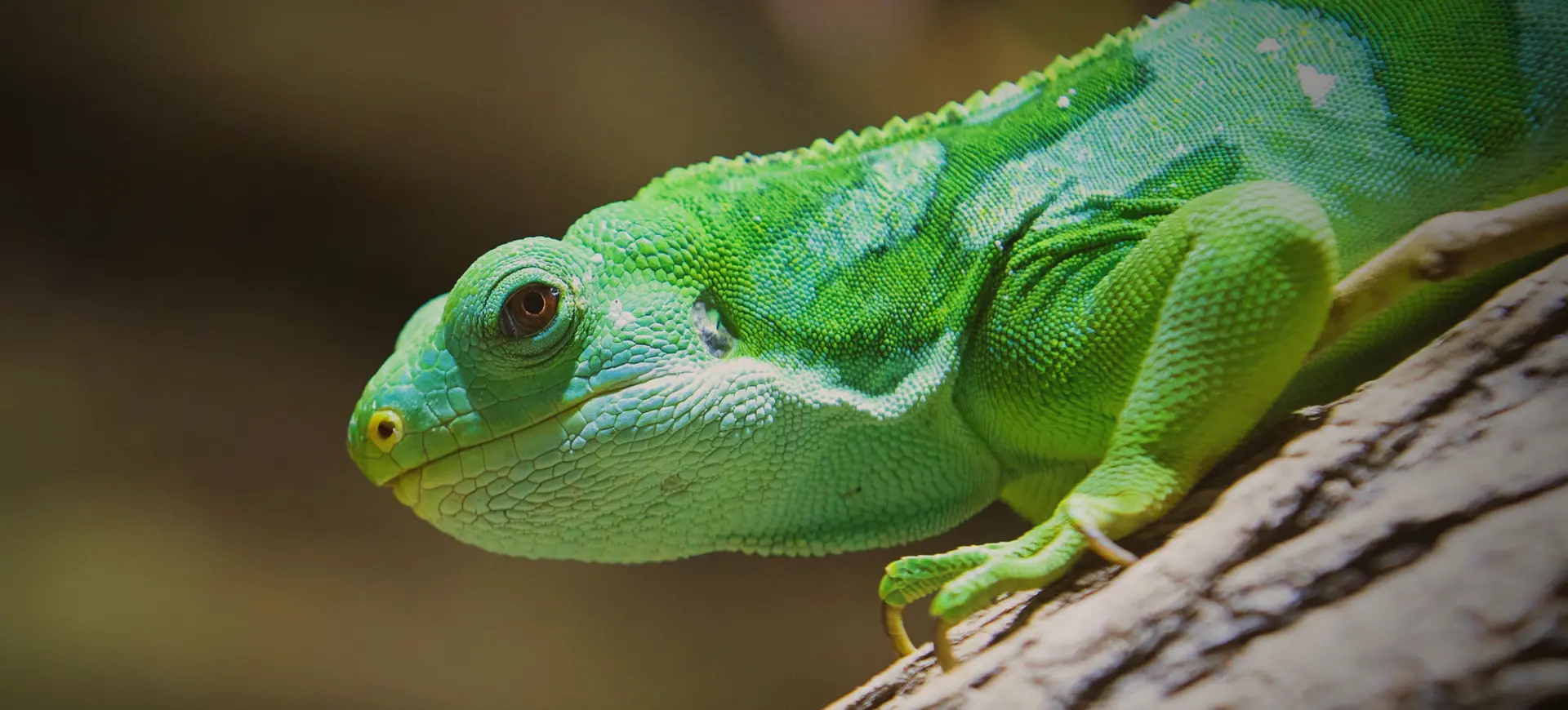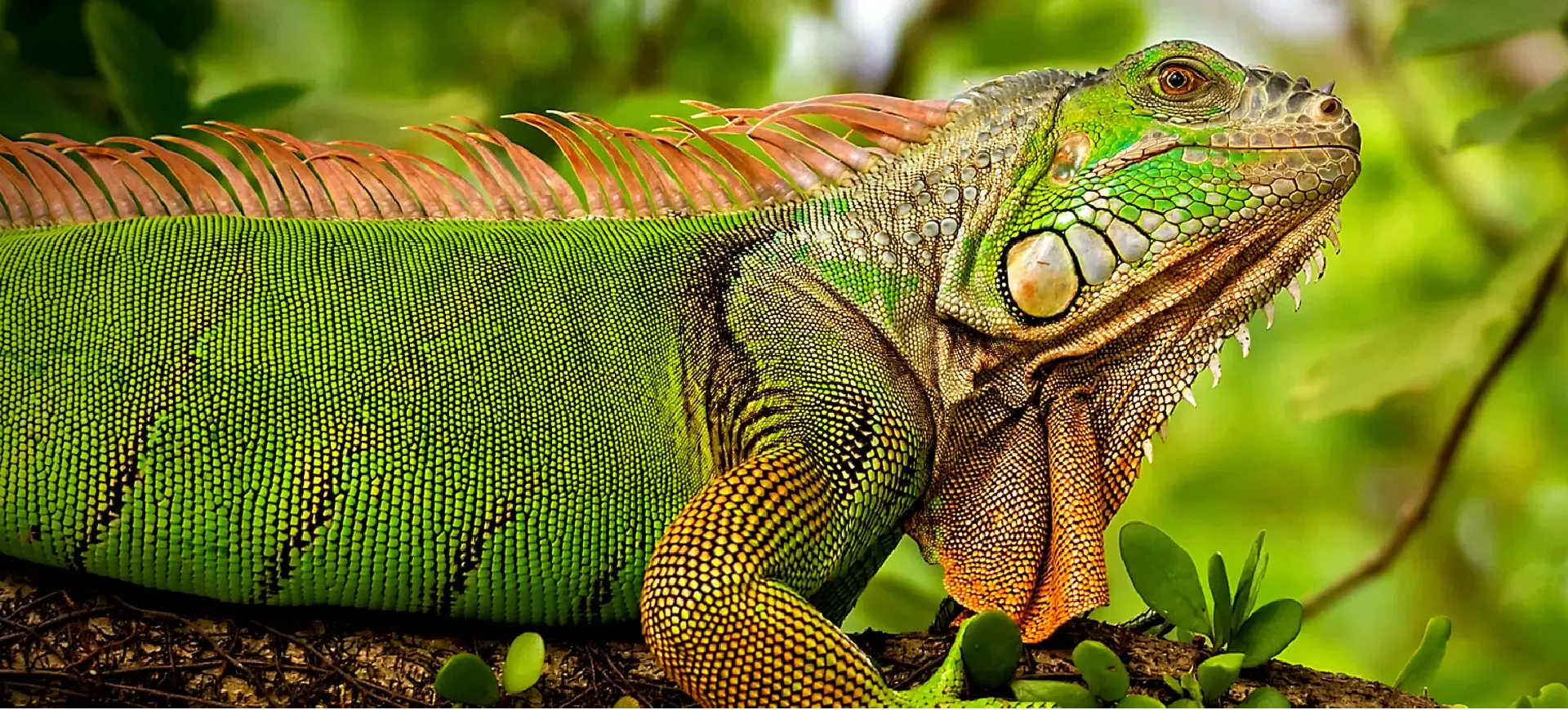Overview
The Grand Cayman Blue Iguana, scientifically known as Cyclura lewisi, is a striking and critically endangered lizard species native to the Grand Cayman Island. Known for its distinctive blue coloration, which is more pronounced in males and intensifies during the breeding season, this iguana is among the longest-living species of lizards. The adult Blue Iguana can reach lengths of up to 5 feet (1.5 meters) and weigh as much as 30 pounds (14 kilograms). Its rough and scaly skin provides effective camouflage among the island’s rocky terrain and scrub vegetation.
This iguana primarily dwells in rocky, sunlit, open areas with nearby shady retreats. It has a slow metabolism and spends most of its time sunbathing to regulate its body temperature. Despite their large size, these iguanas are predominantly herbivorous, feeding on various plants, fruits, and flowers. They play a crucial role in their ecosystem as seed dispersers and as a part of the island’s unique biodiversity.
The Grand Cayman Blue Iguana is a solitary and territorial animal, especially during the breeding season. It is known for its slow and deliberate movements but can display surprising speed when threatened. These iguanas have a complex system of social behavior involving visual and tactile signals, which they use to communicate with each other, particularly during the breeding season and territorial disputes.
Physical Description:
The Grand Cayman Blue Iguana has a robust, muscular body with a large, rounded snout and powerful limbs. Its most notable feature is its vibrant blue coloration, especially in adult males. The skin is overlaid with bony scales, and a row of spines runs along the iguana’s back, from the neck to the tip of the tail, providing defense against predators. The males are generally larger than the females and possess more pronounced dorsal crests and jowls.
As juveniles, these iguanas are less colorful, typically a dull gray or olive green, gaining their striking blue coloration as they mature. Their long tails, up to three times the length of their body, are used for balance and defense. The iguana’s strong jaw muscles facilitate a herbivorous diet, allowing them to tear and chew tough plant material. Their sharp claws are adept for digging and climbing.

Lifespan: Wild: ~60 Years || Captivity: ~69 Years

Weight: Male & Female: 25-30 lbs (11-14 kg)

Length: Male & Female: 48-60 inches (122-152 cm)
Characteristic:
Native Habitat:
The Grand Cayman Blue Iguana is endemic to the Grand Cayman Island in the Caribbean. Its preferred habitat includes rocky, open areas and light forests, where it can bask in the sun. These iguanas require environments with access to both sunny and shady areas, as they need to regulate their body temperature through sun exposure.
Human development and the introduction of non-native species have greatly reduced and fragmented their habitat. These iguanas are now mostly found in nature reserves and protected areas on the island. The preservation of their natural habitat is crucial for their survival, as they are highly adapted to and dependent on this specific environment.
Climate Zones:
Biomes:
WWF Biomes:
Biogeographical Realms:
Continents:
Countries:
Diet:
Diet & Feeding Habits:
The Grand Cayman Blue Iguana is primarily herbivorous, feeding on many plants, including leaves, flowers, and fruits. Their diet is crucial for dispersing many plant seeds on the island, making them a keystone species in their ecosystem. These iguanas have been observed eating over 45 different plant species, showing a preference for those with high nutritional value.
In addition to plant material, they may occasionally consume animal matter, such as insects, particularly during their juvenile stage. Their feeding habits change with the seasons, depending on the availability of different food sources. In the dry season, they may eat more fruits and flowers; in the wet season, their diet consists of more leaves and stems.
Mating Behavior:
Mating Description:
Distinct rituals characterize the Grand Cayman Blue Iguana’s mating behavior. During the breeding season, males become more territorial and display brighter coloration. They use visual displays, such as head bobs, dewlap extensions, and body inflation, to attract females and intimidate other males.
Females lay eggs in nests that dig in sandy or soft soil, typically laying between 1 and 21 eggs per clutch. The eggs are incubated for approximately 60 to 90 days, with hatchlings emerging fully independent. These young iguanas are vulnerable to predation and must fend for themselves from birth. The iguanas reach sexual maturity at around 2 to 3 years of age.
Reproduction Season:
Birth Type:
Pregnancy Duration:
Female Name:
Male Name:
Baby Name:
Social Structure Description:
The Grand Cayman Blue Iguana is a solitary and territorial species, particularly during the breeding season. Adult males establish and defend territories, which they use for mating and feeding. Territorial disputes between males are common and can involve aggressive displays and physical confrontations.
Outside of the breeding season, these iguanas are less territorial and may be seen in proximity to one another, particularly in areas with abundant food sources. Young iguanas are more social and can often be found in small groups. The social structure of this species is largely influenced by the availability of resources and the need for reproduction.
Groups:
Conservation Status:
Population Trend:
The population of the Grand Cayman Blue Iguana has been critically endangered, primarily due to habitat destruction, road accidents, and predation by feral animals. In the early 2000s, the wild population was estimated to be as low as 10-25 individuals. However, intensive conservation efforts, including captive breeding and release programs, have significantly increased their numbers.
Due to successful conservation and breeding efforts, the current wild population is estimated to be around 750 individuals. These iguanas are now mostly found in protected areas with a higher chance of survival. Ongoing monitoring and habitat protection are crucial for the species’ continued recovery.
Population Threats:
The primary threats to the Grand Cayman Blue Iguana include habitat loss due to human development and the introduction of invasive species. Feral cats and dogs predate on the iguanas, and hatchlings are particularly vulnerable. Road accidents are a significant cause of mortality, as vehicles often cross roads and hit iguanas.
Another threat is the genetic bottleneck effect due to the historically small population size, which can reduce genetic diversity and increase disease vulnerability. Climate change poses a long-term threat, potentially impacting their habitat and food sources. Conservation efforts must address these threats to ensure the survival of this unique species.
Conservation Efforts:
Conservation efforts for the Grand Cayman Blue Iguana are extensive and include habitat protection, captive breeding, and public education. The Blue Iguana Recovery Program has been instrumental in increasing its population through breeding and release initiatives. Protected areas have been established, providing safe habitats for the iguanas to live and breed.
Public awareness campaigns have helped reduce road accidents and control invasive species. Research on the iguana’s ecology, behavior, and genetics is ongoing, providing valuable information for conservation strategies. International support and funding have been crucial in the success of these conservation efforts.
Additional Resources:
Fun Facts
- The Grand Cayman Blue Iguana is one of the most strikingly colored lizards in the world, with its vibrant blue skin.
- It is the largest native land animal currently living on Grand Cayman Island.
- These iguanas have been known to live for more than 70 years, both in the wild and in captivity.
- The blue coloration is more pronounced in males and is believed to play a role in attracting mates and displaying dominance.
- Unlike many other lizard species, the Grand Cayman Blue Iguana is primarily active during the day (diurnal).
- They can survive long periods without food, thanks to their ability to store fat in their large bodies.
- Their population was once reduced to fewer than 25 individuals in the wild, making them one of the world’s most endangered species of lizards.
- Concerted conservation efforts, including captive breeding and habitat protection, saved the species from extinction.
- These iguanas have a unique ‘dance’ involving head bobbing and other body movements, which they use for communication and territorial displays.
- The Grand Cayman Blue Iguana’s conservation success story is often cited as a model for other endangered species recovery programs.











